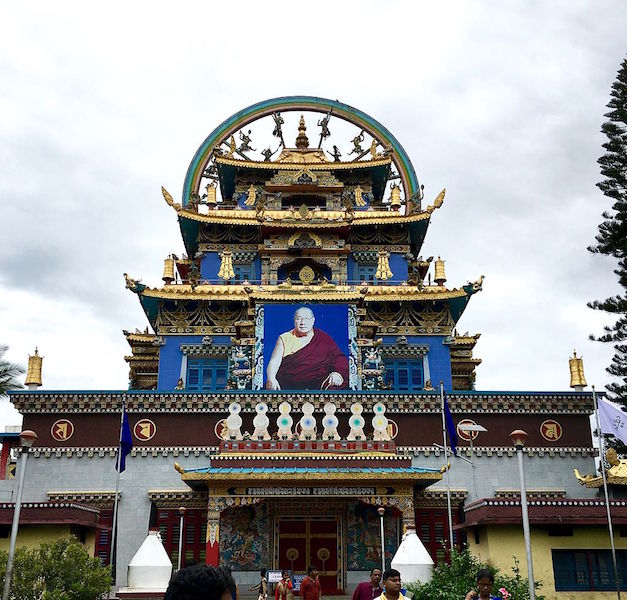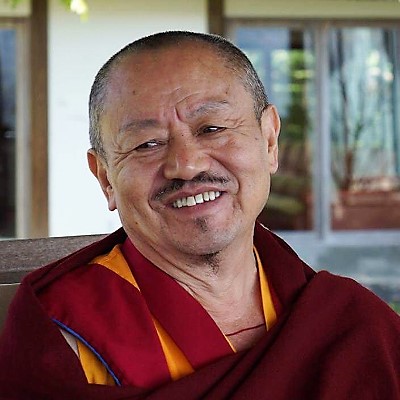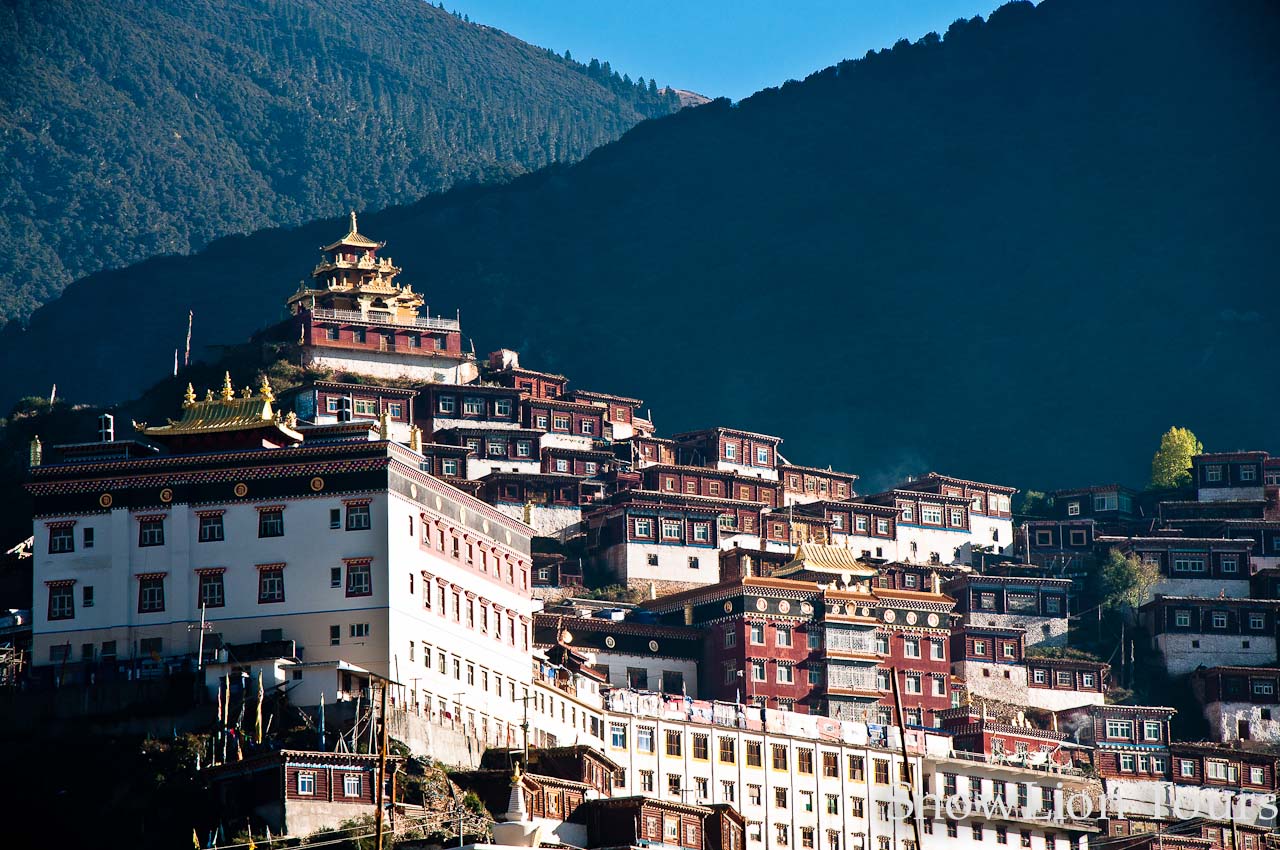Lower Palyul Monastery, Tibet. From wikipedia.org
The story of the Palyul Dzogchen lineage begins, institutionally, at Palyul Monastery, one of the six “mother monasteries” of the Nyingma school. The house of Nyingma is the oldest school of Tibetan Buddhism that dates back to Padmasambhava in 8th century Tibet. Palyul Dzogchen has held an esteemed place in the halls of Tibetan Buddhist cloisters since 1665. This heritage of primal wisdom, of primordial joy and effortless living, manifested in a particularly powerful spirit in the form of Kyabjé Drubwang Padma Norbu Rinpoche (1932–2009), who was the Palyul school’s 11th throne holder.
Penor Rinpoche was most famous for building the Thegchog Namdrol Shedrub Dargyeling monastery, known in short as Namdroling, in Mysore. As my friend and one of our website’s former columnists, Tinley Fynn, wrote: “It is now the largest Nyingma monastery in the world, providing for the physical and educational needs of a population of around 5,000 monks and nuns. However much the monastery grew, Rinpoche never lost his personal connection with his followers, and remained a loving father to all who knew him. At my birth, he blessed me with my name; at my great-uncle’s passing, he called on our home and performed puja. In the unflinching light of his teachings and compassionate leadership, a community not only rebuilt itself, but also flourished and thrived.”

Carrying on this Dharma flame, this legacy of compassion and wisdom, is Khenchen Tsewang Gyatso Rinpoche, or Khen Rinpoche. At present, he is one of three senior khenpos at Namdroling Monastery’s Ngagyur Nyingma Institute. While I haven’t met Rinpoche personally—not yet—I know enough of his students, and know well enough from their devotion to him how deeply his teachings have transformed their lives. He was born in 1954 in a small village in south Tibet, near Bhutan, and after years of training Penor Rinpoche transmitted the role of khenpo to him in 1983.
Penor Rinpoche obviously saw something in Khen Rinpoche, something more than simply being learned in the Dharma or having a compassionate heart (however important those qualities are). I believe Khen Rinpoche was enthroned (and is now teaching widely around the world) because he comes from a line of leaders who faithfully fulfill the vision of the Nyingma house: to reveal the path to “training to be a noble person,” as he says in the introduction to his book Guidelines for Training the Bodhisattva Mind. But this is not so much a refinement, as a return to our primordial state. Such is the philosophy of the Nyingma school.
In an interview with Palyul Times, Khen Rinpoche said: “Generally, in the outer and inner classes of tantra, it is said that the main path of the secret vehicle of tantra is the practice of visualizing all phenomena as pure and having devotion to one’s master. And especially in Dzogpachenpo [the specialist teaching of the Palyul school], if one has strong devotion to one’s root master, considering him as a real Buddha then there is no doubt that the blessing of the master will flow into oneself.” (Palyul Times, 63)

Here, Khen Rinpoche outlines the basics of the Palyul path: to become a noble person entails realizing that all things are inherently pure and that the guru is the one who helps facilitate this realization. He writes in Guidelines: “Now you view all sentient beings as deities. Try to have that pure perception. All sentient beings are like deities and samsara is like a Buddhafield. You are also one of those deities. Try to have the intention of a deity, to perceive as a deity, act as deity, behave as a deity, meditate as a deity, and do all things as a deity. . . .
“You cultivate that kind of pure perception: that everything is pure by its nature. Based on that, practice the view that all phenomena in the relative world—all things—are by their nature pure enlightened beings. According to their nature, again, their nature is that of emptiness. That is why the non-duality of awareness and emptiness is your view. You need to have awareness of perceiving everything as pure and perfect and having been accomplished as a deity. For that purpose, your actual meditation practice in Vajrayana consists of concentrating on the generation stage of the deity and the completion stage of the deity.” (79)
In this persuasive and profound passage, Khen Rinpoche sums up the goal of not simply deity and emptiness meditation, but also ties it to how all teachings are condensed into two things: our view and behavior. (81–82) By highlighting the interlocked nature of our view and behavior (they can’t be seen separately), Khen Rinpoche compels us to see that our interactions with the relative world (which often lead to suffering and grasping) are behavioral habits shaped by incorrect views. Through realigning our view with the correct one, that of the Buddhadharma, we are able to change our habitual behavior, and therefore reorient our path towards the enlightened Way, leading to a positive, self-reinforcing loop of bodhisattva views and conduct.
This is Khen Rinpoche’s Palyul path. This is how the Buddha’s teachings transform us, and how we are empowered to transform ourselves.
References
Khenchen Tsewang Gyatso Rinpoche. 2015. Guidelines for Training the Bodhisattva Mind. Kuala Lumpur: Palyul Clear Light.
“Interview with Khenchen Tsewang Gyatso.” Palyul Times, 10. 2017.
Related features from Buddhistdoor Global

